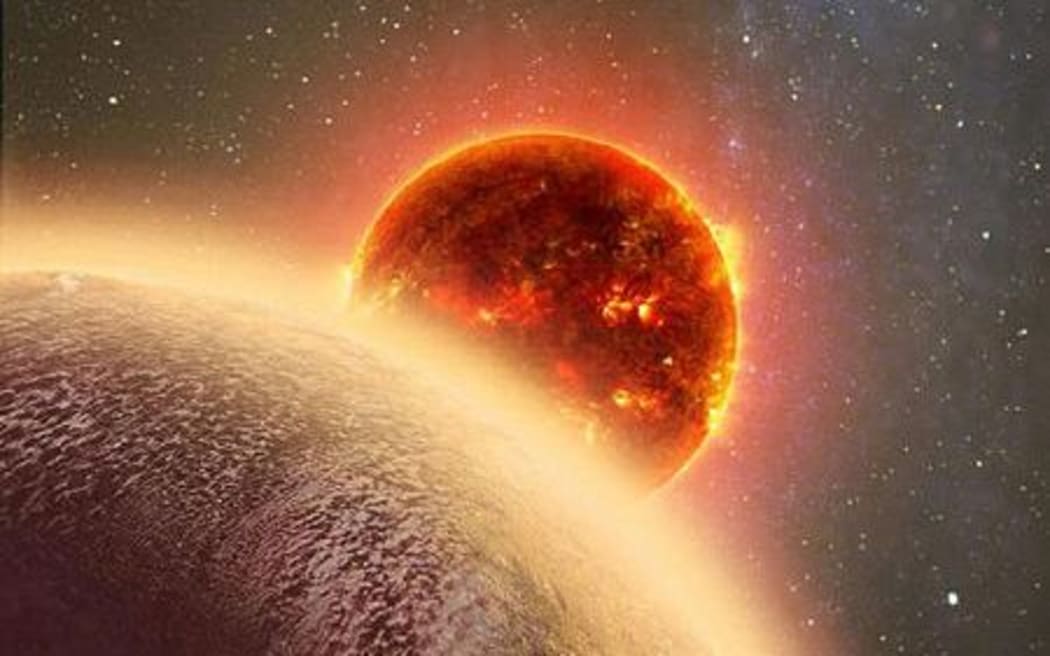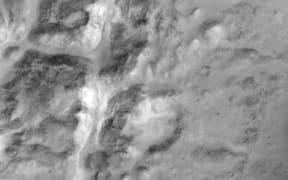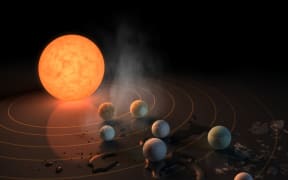Scientists say they have detected an atmosphere around an Earth-like planet for the first time.

The planet's thick atmosphere may contain water or methane Photo: Wikimedia Commons / Dana Berry
They have studied a planet, known as GJ 1132b, which is 1.4 times the size of our planet and is 39 light years away.
Their observations suggested that the "super-Earth" was cloaked in a thick layer of gasses that were either water or methane or a mixture of both.
The study was published in the Astronomical Journal.
Discovering an atmosphere, and characterising it, is an important step forward in the hunt for life beyond our Solar System.
But it is highly unlikely that this world was habitable: it has a surface temperature of 370°C.
Chemical signatures
The discovery of planet GJ 1132b was first announced in 2015. It lies in the Vela constellation in the southern hemisphere.
While it is a similar size to Earth, the star it orbits is much smaller, cooler and dimmer than our Sun.
Using a telescope at the European Southern Observatory in Chile, the researchers were able to study the planet by watching how it blocked some of the light of its host star as it passed in front of it.
"It makes the star look a little bit fainter - and it's actually a very good way of finding transiting planets - it's how this one was found," Dr Southworth said.
But different molecules in a planet's atmosphere - if it has one - absorb light in different ways, allowing scientists to look for their chemical signatures when the world transits its star.
The observations of planet GJ 1132b suggest that it has a thick atmosphere containing either steam and/or methane.
"One possibility is that it is a 'water world' with an atmosphere of hot steam," said Dr Southworth.
The researchers say while it is unlikely that any life-forms could survive on this world, the discovery of an atmosphere was encouraging in the hunt for extraterrestrial life.
"What we have shown is that planets around low mass stars can have atmospheres and because there are so many of those in the Universe, it makes it that much more likely that one might have life," Dr Southworth said.
Royal Observatory Greenwich public astronomer Marek Kukula said it was a nice proof of concept.
"If the technology can detect an atmosphere today, then it bodes well for being able to detect and study the atmospheres of even more Earth-like planets in the not-too-distant future."
-BBC



